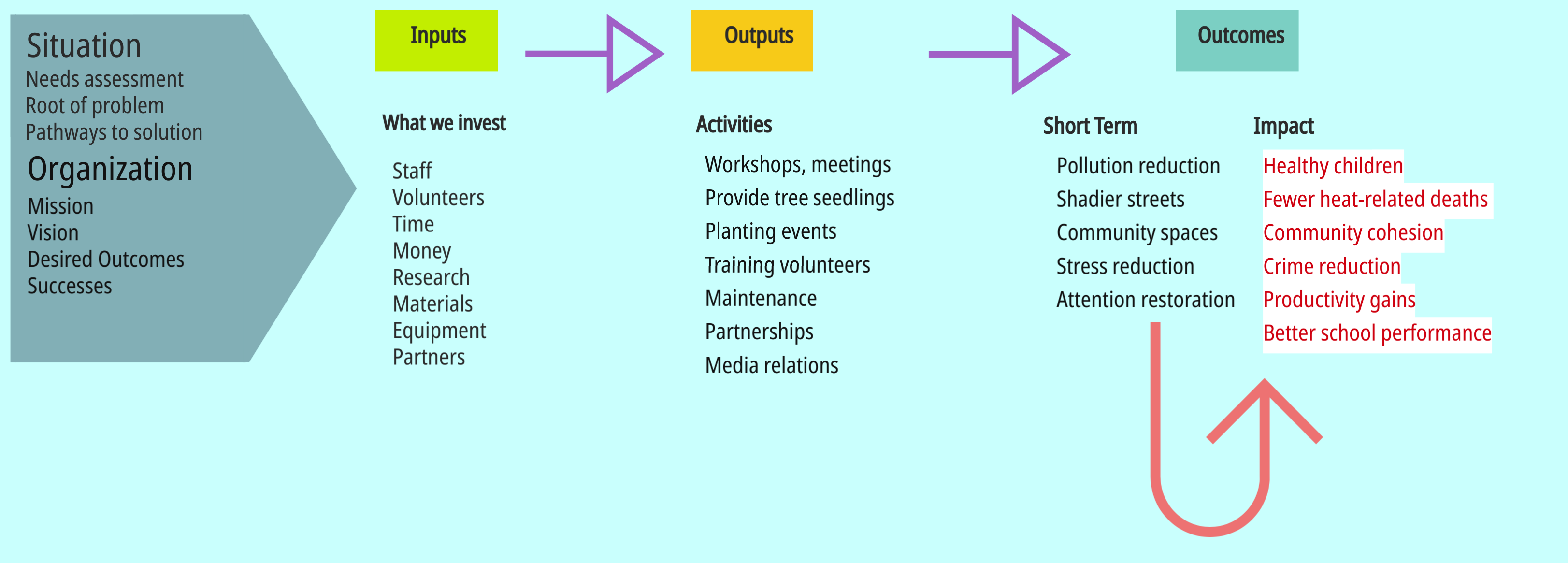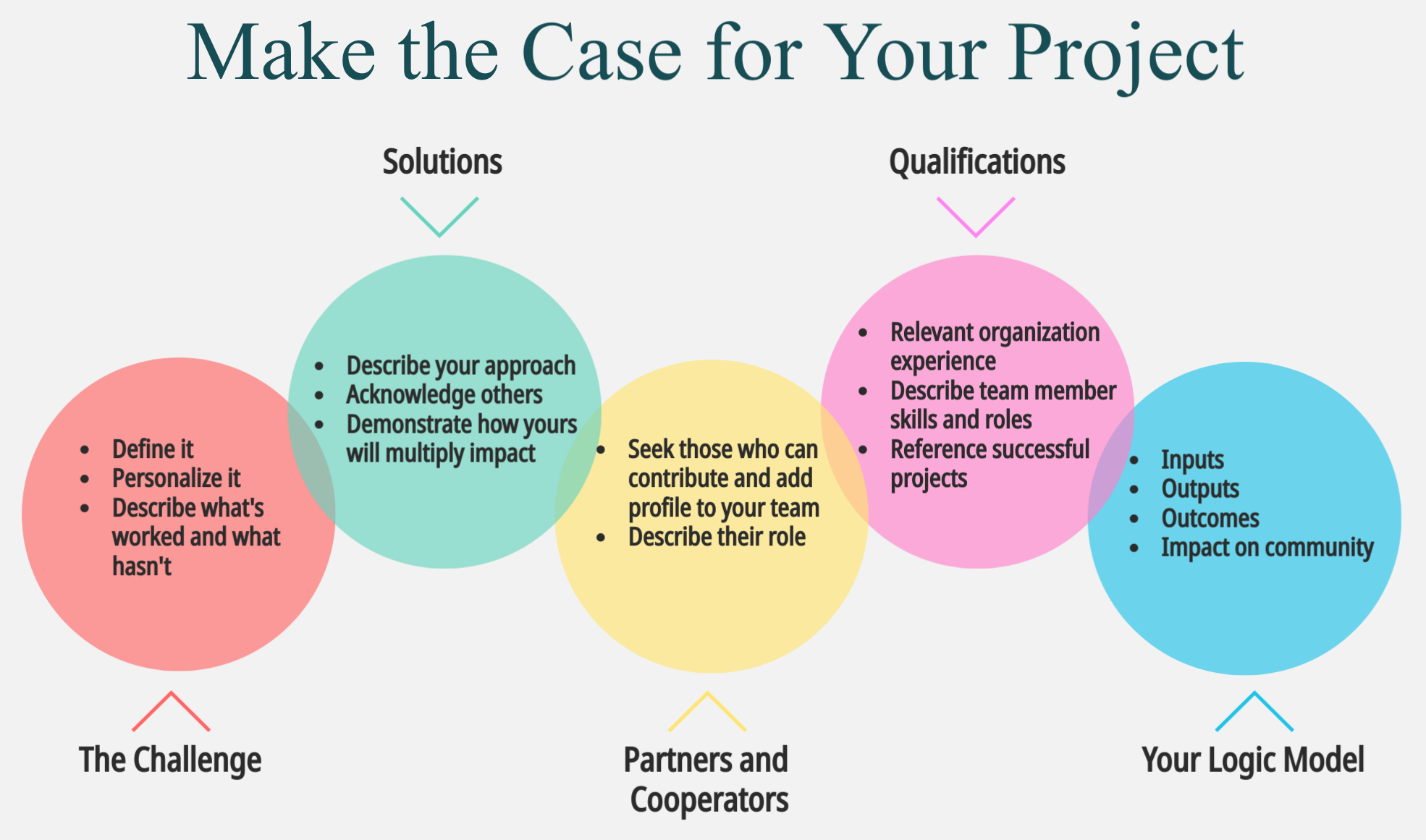Organize your project in a way that resonates with funders
While every potential funder may agree on the basic need — e.g. child health — each may favor a different solution. The lesson for urban forestry? Focus on what funders want to accomplish; don’t just try to “sell” them trees. Your project needs to packaged in a way that will attract their interest. And what attracts one person’s attention, won’t necessarily attract everybody else’s.
Write your project proposal
Proposals can be five pages. Or they can be fifty. What they share in common is a structure that leads the reader from an understanding of the issue to acceptance of a plan to resolve it. There are countless guides to writing an effective proposal. This one covers all the bases. Whatever structure you decide to use — and it can be as simple or complex as the project requires — remember one rule: Don’t confuse inputs, outputs, outcomes and impacts.

Now shelve it
One size will not fit all. Whatever the project, proposals must be tailored to each potential funder, and their priorities. So once you have your project blueprint, use it as a foundation to create a prospectus — a brief summary of your project that aims directly at the funder’s objectives. For example, for donors interested in children, you might orient your prospectus around health or education. It doesn’t change the nuts and bolts of what you’re proposing; you’re simply spotlighting what that particular funder cares about.
A prospectus is brief, powerful and written for an audience of one
Try to stick to two pages or fewer. Yes. Shorter is harder. But people need a good reason to pore through a ten-page document. Just because you sent it isn’t a good reason.
 Tip: Write your first draft. Count the words. Then try to edit it into a second draft using only half the words you used in the first. The result will be a concise, sharper description of your project.
Tip: Write your first draft. Count the words. Then try to edit it into a second draft using only half the words you used in the first. The result will be a concise, sharper description of your project.
Organizing your prospectus
Fortunately, there’s a common framework for most proposals. It’s shown in the chart below. Compress the contents of each section as best you can. Crisp, concise writing requires multiple drafts.

“I get dozens of proposals for tree planting projects. But they sometimes forget to tell me exactly what the projects hope to accomplish. I’d rather run to the shredder to recycle the paper, than recycle the idea.” Former foundation director
Follow funder instructions
Many foundations and even individual donors have detailed and specific instructions on how to apply for funding. You can find them on their websites — or by asking directly. Even when they use awkward online forms with strict character limits [many do], follow their rules to the letter.
Prospectus vs. Letter of Intent
Actually one serves equally well as the other. The only difference is structure. A letter of intent will include all the details found in the prospectus, but perhaps written in a different style. The prospectus, more formally structured, is often used for unsolicited requests [with brief cover letter]. Many donors, especially larger foundations, will ask for a letter of intent or a brief prospectus before considering whether to invite a full proposal. If you make it that far, you’re almost there.
Remember: Understand donors’ motivation and priorities


